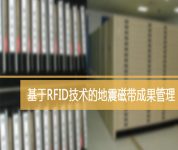
Little Bee helps Dagang Oilfield RFID seismic tape management
[ad_1]
Project Background
Dagang Oilfield Branch’s archives have tens of thousands of tape archives that store seismic information. Because of the humid and dry climate in the north, a large amount of tape turnover is required, and they are often in and out of the library, and the number is large each time. Need to be able to conveniently record, verify, and update the tape in and out of the library to the database in real time. The original bar code management method cannot meet the requirements for efficiency and accuracy, and a more advanced method is needed to solve the problem.

challenge
For the archives of the archives, a certain page in each booklet may be an independent archive. The archives also have some reel-shaped archives. These archives need a very good adhesive backing. Because Tianjin’s climate is humid or dry, it has a great impact on the preservation of the archives. Magnetic tapes are often in and out of the library, and the quantity is large each time, and only one-to-one records can be recorded through barcode scanning, which requires a large workload. The biggest and most important issue for the archives is the management of the tape archives used to store earthquake information, because the north has a humid and dry climate. If the tapes are not rotated every year, they will become corrupt. To this end, the company cooperated with a data backup company to transport the tapes in batches for processing, and then ship them back. There are a lot of problems with warehouse management. Main challenges:
Barcode record file information is limited, unable to record detailed information
The label is not firmly pasted, and the label is easy to fall off after long-term use
Assets import and export, inventory workload is large, and a lot of human resources are required
Unable to provide a graphical management interface to summarize and query file information
Unable to locate the file storage location, the query workload is heavy
solution
Tianjin Little Bee’s RFID technology-based solution aims at simplifying the complexity and constructing a practical management platform characterized by the physical management of archives. The system uses RFID radio frequency identification technology to solve the problem for the enterprise that often occurs in the file asset management inconsistent with the financial accounts, so that the enterprise file asset management is orderly and the accounts are consistent.
According to customer needs, use RFIDelectronic labelMarking the tape is equivalent to assigning an ID card to the tape and binding relevant information in the label. The use of fixed RFID readers, antennas and handheld RFID data terminals to complete the daily management and inventory work of tape results, to achieve the full tracking of the life production cycle and use status of seismic tape results, which guarantees the maximum technically The accounts of the tape assets are consistent, avoiding the unidentified loss of tape assets. The system structure is as follows:

Value
Archival assets have the characteristics of high value, long service life, and difficult management. With the establishment of this system, the system can take several months of asset inventory work that used to be taken by a few people, but now it can be easily completed by a few people in a very short period of time. The original cumbersome search work can now be accurately completed in a few seconds, and the original large number of repeated purchases of archive materials and a large amount of idle waste can now be resolved in time.
useRFIDThe technology realizes the automatic identification of seismic data tape assets and integrates with archive management system software. It improves the efficiency of overall asset management, reduces various costs of the enterprise, and solves the challenges faced by current asset management. Realize the effective management of tape assets in kind, eliminate the phenomenon of accounting inconsistency, and make the tracking management of tapes easier and more intuitive through the system, and at the same time solve the problem of easy asset loss. In terms of specific work, the asset storage, asset movement, and inventory work have been improved, and the overall situation of assets can be fully grasped in real time.
[ad_2]




